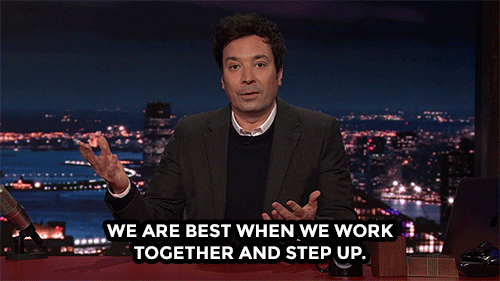Ocean voyages, the invention of railways, man’s first flight, the development of vaccines, and the moon landing. These are just a few of humanity’s greatest achievements, and they all have one thing in common.
None of them was carried out by a single individual.
Historically humanity succeeds as a group, and that isn’t any different when running a business. As a manager, you depend on the success of the members of your team, and as an employee, you depend on the success of your colleagues.
While ensuring positive collaboration has always been a challenge, the current state of the world poses a new set of challenges. Mainly, how do you give your team the means to achieve a positive and fruitful collaboration in a hybrid work environment?
This guide will provide you with tips and tricks on how to nurture a collaborative environment in the workplace:
-
Build the right environment for collaboration
-
Involve upper management to encourage the right culture and mindset
-
Involve external stakeholders
1. Building the right environment for collaboration
With so many people working remotely, the new normal has allowed for more flexibility but at the same time the need for regular interactions between colleagues (whether in physical premises or online) has never been more important.
A Stanford study from a few years ago found that even the mere perception of working collectively on a task can supercharge company performance. *
Giving your employees the right tools and technology to help enable effective meetings will encourage collaboration by removing the headache from planning and sharing ideas. Not only are tools just as important, when in the office, but proximity to colleagues can play a part in encouraging exchange of ideas and relationship building.
As the return to the office poses its own challenges in the new hybrid workplace, collaboration is more important than ever as teams find themselves in a mix of virtual and physical contexts. Encourage what works best for the project at hand and the colleagues involved—by addressing the needs of a hybrid workforce.
2. Involve upper management to encourage the right culture and mindset
There are several ways to build a collaborative culture. Encouraging team members to have the right collaborative mindset by allowing one to challenge the status quo, as well as having an inclusive environment for different/new ideas to be brought up, are all things to encourage in your work culture to help with collaboration.
Three ways management can encourage collaboration
-
Provide incentives for collaboration by recognizing achievements collectively and not individually
-
Ensure structure and accountability by developing policies, defining roles, processes, and lines of communication
-
Give employees the resources to achieve team goals in collaboration by providing budget, resources, training, knowledge sharing opportunities etc.
Creating an office work-environment that encourages interaction, team building, and effective meetings is one of many ways to encourage this behavior.
Giving employees the tools and space to meet in person, talk and build relationships, as well as the resources to work in a hybrid office with colleagues working from home, are the new challenges management faces. Having that human-to-human connection leads to productive communication and collaboration and a lot can be gained from body language and face-to-face meetings.
3. Involve external stakeholders
Nurture cross functional teams with external stakeholders. Open your product innovation by collaborating with customers and users as well as other teams . This will give you better insights and encourage knowledge sharing.
Productivity is increased when you know who to ask, where to look, and how things are done. Opening the work silos will add new input.
Sometimes this information is as simple as talking to your colleagues in customer support, other times it is a close dialogue with super users to optimize UX and functionality. Whatever the case, the outcome will enable an open discussion to better enhance both the customer experience and the product roadmap.
We hope this guide gave you some inspiration to begin the transition back to the office and highlights the importance of meetings to build a collaborative and productive workplace.
References:
https://www.forbes.com/sites/adigaskell/2017/06/22/new-study-finds-that-collaboration-drives-workplace-performance/?sh=540c5bf03d02
